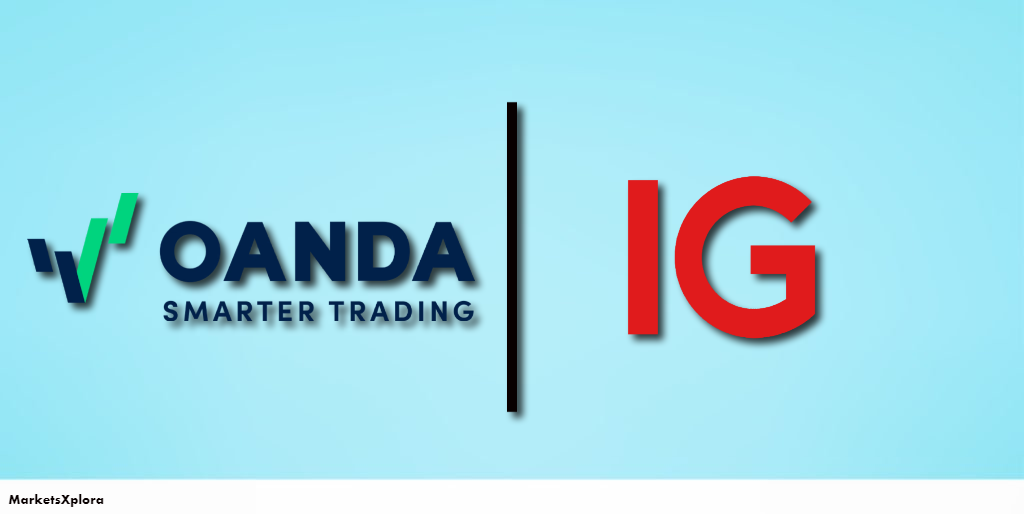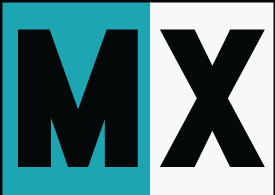
Oanda vs IG Group- it’s a common dilemma for anyone starting their trading journey. Trust me, I’ve been in your shoes, trying to figure out which broker to go with. It’s not an easy choice, but I’m here to make it simpler for you. In this review, I’ll break down everything you need to know about these two popular brokers.
We’ll cover:
- Company Backgrounds
- Trading Platforms
- Financial Instruments Offered
- Fees and Commissions
- Beginner-Friendly Features
- Advanced Trader Considerations
- Account Types and Minimum Deposits
- Leverage and Margin Requirements
- Security Measures
- Customer Support
- Educational Resources and Research Tools
- Pros and Cons
By the end of this comparison, you’ll have a clear picture of which broker might be the better fit for you.
Oanda vs IG: Company Backgrounds
When choosing a broker, it’s good to know a bit about their history and who’s keeping an eye on them. Let’s see how Oanda and IG Group stack up:
Feature |
Oanda |
IG |
|---|---|---|
Founded |
1996 |
1974 |
Origin |
USA |
UK |
Main Regulators |
FCA (UK), CFTC (US), ASIC (Australia) |
FCA (UK), ASIC (Australia), FSCA (South Africa) |
Years in Business |
27+ |
49+ |
My take: Both Oanda and IG are old-timers in the trading world. IG’s been around longer, which might give some folks more confidence. But honestly, both are well-established and watched closely by big-name regulators. I’d say it’s a tie here – you can trust either one.
Trading Platforms
The platform you use can make or break your trading experience. Here’s what Oanda and IG offer:
Feature |
Oanda |
IG |
|---|---|---|
Main Platform |
fxTrade |
IG Trading platform |
Other Platforms |
MetaTrader 4 |
MetaTrader 4, ProRealTime |
Mobile App |
Yes (iOS, Android) |
Yes (iOS, Android) |
Web Trading |
Yes |
Yes |
My take: Both offer solid platforms, but I’m leaning towards IG here. They give you more options, including the popular ProRealTime for advanced charting. Oanda’s platform is good, but IG’s variety gives it the edge, especially if you like to switch things up.
Trading Instruments Offered
Let’s look at what you can trade on each platform:
Instrument |
Oanda |
IG |
|---|---|---|
Forex |
70+ pairs |
80+ pairs |
CFDs |
Indices, Commodities, Bonds |
Stocks, Indices, Commodities, Cryptocurrencies |
Stocks |
No |
Yes |
Options |
No |
Yes |
Cryptocurrencies |
No |
Yes |
My take: IG is the clear winner here. They offer a wider range of products, including direct stock trading and crypto. If you’re just into forex, Oanda is fine. But for a more diverse portfolio, IG gives you way more options to play with.
Fees and Commissions
Now, let’s talk money – specifically, how much these brokers will cost you:
Fee Type |
Oanda |
IG |
|---|---|---|
Forex Spreads |
From 0.9 pips |
From 0.6 pips |
Commissions |
No |
Yes, on some accounts |
Overnight Fees |
Yes |
Yes |
Inactivity Fee |
No |
£12 per month after 2 years |
My take: This one’s tricky. Oanda looks cheaper at first glance with no commissions, but IG’s spreads are tighter. For frequent traders, IG might work out cheaper. For casual traders, Oanda’s no-inactivity-fee policy is nice. I’d say go with Oanda if you trade less often, IG if you’re more active.
Beginner-Friendly Features
If you’re just starting out, these features can be super helpful:
Feature |
Oanda |
IG |
|---|---|---|
Demo Account |
Yes, unlimited |
Yes, 30 days |
Educational Materials |
Articles, webinars, videos |
Academy, webinars, podcasts |
Risk Management |
Stop loss, take profit |
Stop loss, take profit, guaranteed stops |
My take: Both are pretty good for beginners, but I’m giving Oanda the edge here. Their unlimited demo account is great for learning without pressure. IG’s educational content is top-notch, though. If you’re new, you can’t go wrong with either, but Oanda might let you learn at a more relaxed pace.
Advanced Trader Considerations
For the pros out there, here’s what you get:
Feature |
Oanda |
IG |
|---|---|---|
API Access |
Yes |
Yes |
VPS |
No |
Yes |
Advanced Charting |
Basic |
Advanced with ProRealTime |
My take: IG wins for advanced traders. Their ProRealTime platform is a game-changer for serious technical analysis, and the VPS option is great for algo traders. If you’re doing high-level stuff, IG gives you more tools to work with.
That’s the rundown on these sections. Remember, the “best” choice always depends on your specific needs. But hopefully, this gives you a clearer picture of what each broker brings to the table!
Account Types and Minimum Deposits
Let’s talk about what kinds of accounts you can open and how much cash you need to get started:
Feature |
Oanda |
IG |
|---|---|---|
Account Types |
Standard, Premium |
Standard, Plus, Pro |
Minimum Deposit |
$0 |
£250 (or equivalent) |
Demo Account |
Yes, unlimited |
Yes, 30 days |
My take: Oanda’s $0 minimum deposit is a real winner here. It’s perfect if you want to start small or just test the waters. IG’s £250 minimum isn’t huge, but it might be a barrier for some folks. If you’re just starting out or want to trade with small amounts, Oanda’s your best bet. But if you’re planning to invest more seriously, IG’s tiered accounts might offer some perks that make the minimum deposit worth it.
Leverage and Margin Requirements
Now, let’s look at how much buying power these brokers can give you:
Feature |
Oanda |
IG |
|---|---|---|
Max Leverage (Forex) |
30:1 (EU/UK), 50:1 (US) |
30:1 (EU/UK), 50:1 (Australia) |
Margin Call Level |
100% |
50% |
Stop Out Level |
50% |
50% |
My take: The leverage offerings are pretty similar here, mainly because they’re following the same regulations. The big difference is in the margin call level. Oanda gives you a bit more wiggle room before they start closing your positions. If you like to cut it close with your margin, Oanda might be less stressful. But remember, high leverage is risky business – be careful out there!
Security Measures
Your money and info need to be safe. Here’s how these brokers protect you:
Feature |
Oanda |
IG |
|---|---|---|
Fund Protection |
Segregated accounts |
Segregated accounts, FCS protection |
Data Encryption |
SSL encryption |
256-bit SSL encryption |
Two-Factor Authentication |
Yes |
Yes |
Negative Balance Protection |
Yes |
Yes |
My take: Both brokers take security seriously, which is great to see. They’ve got the basics covered with encryption and two-factor authentication. IG edges ahead slightly with their Financial Services Compensation Scheme (FCS) protection, which is like extra insurance for your funds. But honestly, I’d feel safe with either of these brokers. Just make sure you use that two-factor authentication!
Customer Support
When things go wrong, you want help fast. Let’s see how these brokers stack up:
Feature |
Oanda |
IG |
|---|---|---|
Support Channels |
Phone, Email, Live Chat |
Phone, Email, Live Chat, Twitter |
24/5 Support |
Yes |
Yes |
Weekend Support |
Limited |
Yes |
Response Time |
Generally quick |
Generally quick |
My take: Both brokers offer solid support options. IG gets a slight edge for offering weekend support and having a Twitter support channel – sometimes it’s just easier to shoot off a quick tweet. In my experience, both are pretty quick to respond, but IG seems to go the extra mile with their availability. If you’re a weekend warrior trader, IG might be the better choice for you.
Overall, both Oanda and IG are doing a good job in these areas. Oanda shines with its low barrier to entry and flexible margin calls, while IG offers a bit more in terms of account options and customer support. Your best choice depends on your trading style and needs. If you’re new or trading small amounts, lean towards Oanda. If you’re more experienced and want more features, IG might be your better bet. Either way, you’re in good hands with these brokers!
Educational Resources and Research Tools
Learning never stops in trading, and good research tools can make a big difference. Here’s what Oanda and IG offer:
Feature |
Oanda |
IG |
|---|---|---|
Educational Content |
Articles, videos, webinars |
IG Academy, webinars, podcasts |
Skill Level Coverage |
Beginner to Intermediate |
Beginner to Advanced |
Economic Calendar |
Yes |
Yes |
Market Analysis |
Daily updates |
Daily updates, in-house analysts |
Charting Tools |
Basic |
Advanced (ProRealTime) |
Trading Community |
No |
Yes (IG Community) |
My take: IG really shines here. Their IG Academy is top-notch, and the variety of content caters to all skill levels. The ProRealTime charting tools are a game-changer for serious technical analysis. Oanda’s offerings are solid, especially for beginners, but IG goes the extra mile. If you’re keen on learning and love diving deep into market analysis, IG is the way to go. But don’t write off Oanda – their resources are still pretty good, especially if you’re just starting out.
Oanda vs IG: Pros and Cons
Let’s break down the good and the not-so-good for each broker:
Oanda
Pros:
- No minimum deposit
- User-friendly platform
- Great for forex focus
- Unlimited demo account
- No inactivity fees
Cons:
- Limited product range
- Basic charting tools
- No social/copy trading features
IG
Pros:
- Wide range of products
- Advanced trading platforms
- Excellent educational resources
- Robust research tools
- Social and copy trading available
Cons:
- Higher minimum deposit
- Inactivity fees
- Can be overwhelming for beginners
My take: Choosing between these two really depends on what kind of trader you are or want to be.
Oanda or IG: Which should you choose?
After comparing Oanda and IG, I’d recommend IG for most traders. Here’s why:
- Wider range of products
- Excellent educational resources
- Advanced trading platforms
- Robust research tools
- Social and copy trading options
IG offers more room to grow as a trader, from beginner to advanced. Their comprehensive tools and diverse asset offerings make them a one-stop-shop for trading needs.
That said, this is my personal view. Oanda is also a solid choice, especially for newcomers to forex trading. Their no-minimum deposit policy and user-friendly platform make it easy to get started without feeling overwhelmed.
Bottom Line
In conclusion, whether you choose IG or Oanda, you’re in good hands. Take some time to think about what matters most to you in a trading platform. Consider your goals, your experience level, and how you like to learn. Remember, the best choice is the one that fits your unique needs.
Whichever you pick, I wish you success in your trading journey. Happy trading!
